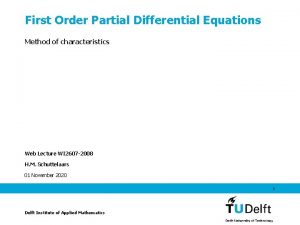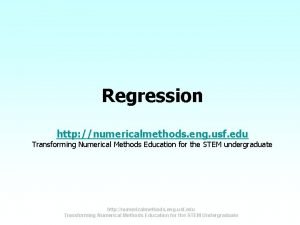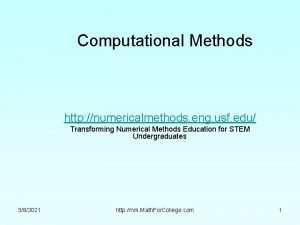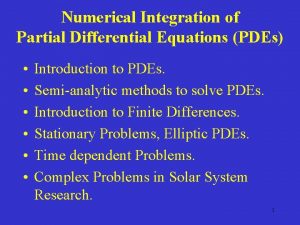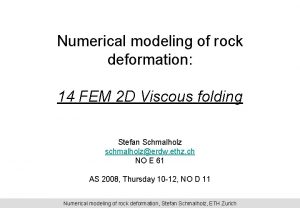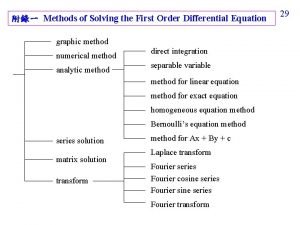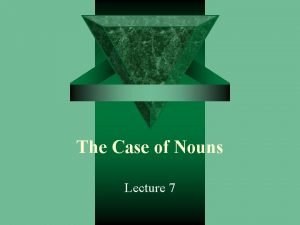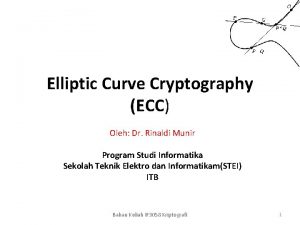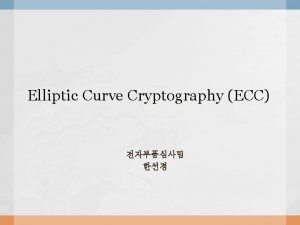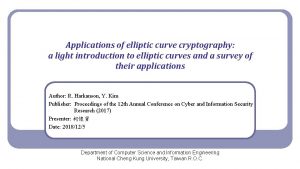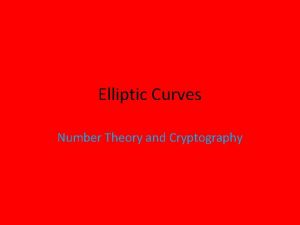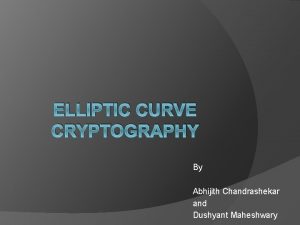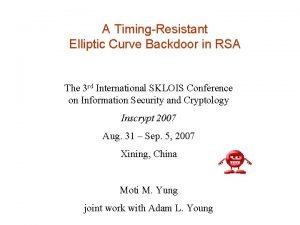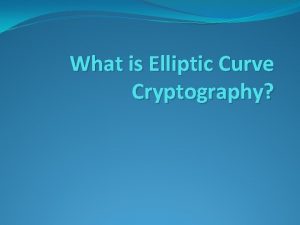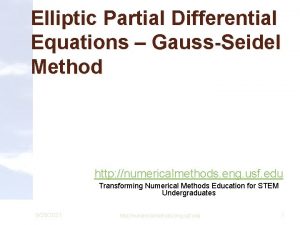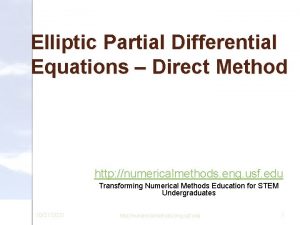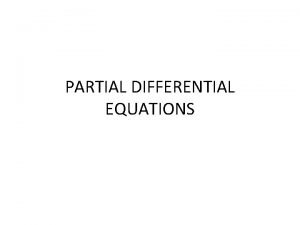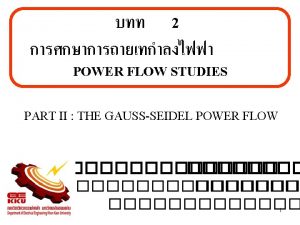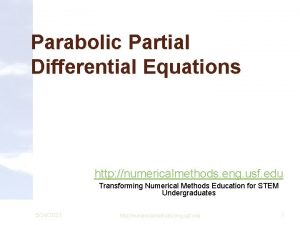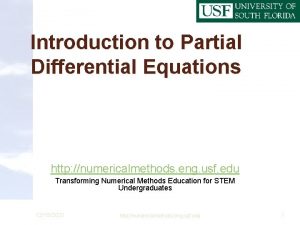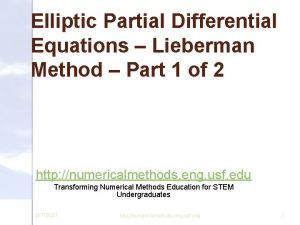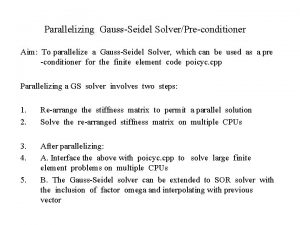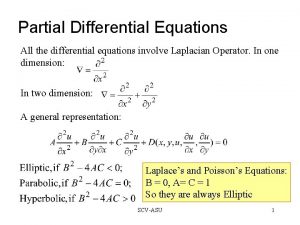Elliptic Partial Differential Equations GaussSeidel Method http numericalmethods



















- Slides: 19

Elliptic Partial Differential Equations – Gauss-Seidel Method http: //numericalmethods. eng. usf. edu Transforming Numerical Methods Education for STEM Undergraduates 9/10/2021 http: //numericalmethods. eng. usf. edu 1

For more details on this topic Ø Go to http: //numericalmethods. eng. usf. edu Ø Click on Keyword Ø Click on Elliptic Partial Differential Equations

You are free to Share – to copy, distribute, display and perform the work to Remix – to make derivative works

Under the following conditions Attribution — You must attribute the work in the manner specified by the author or licensor (but not in any way that suggests that they endorse you or your use of the work). Noncommercial — You may not use this work for commercial purposes. Share Alike — If you alter, transform, or build upon this work, you may distribute the resulting work only under the same or similar license to this one.

Physical Example of an Elliptic PDE

Discretizing the Elliptic PDE

The Gauss-Seidel Method Recall This For the discretized equation can be rewritten as the Gauss-Seidel Method, this equation is solved iteratively for all interior nodes until a pre-specified tolerance is met.

Example 2: Gauss-Seidel Method Consider a plate that is subjected to the boundary conditions shown below. Find the temperature at the interior nodes using a square grid with a length of using the Gauss-Siedel method. Assume the initial temperature guess at all interior nodes to be.

Example: Gauss-Seidel Method We can discretize the plate by taking

Example: Gauss-Seidel Method The nodal temperatures at the boundary nodes are given by:

Example: Gauss-Seidel Method • Now we can begin to solve for the temperature at each interior node using • Assume all internal nodes temperature guess of zero. Iteration #1 i=1 and j=2

Example: Gauss-Seidel Method After the first iteration, the temperatures are as follows. These will now be used as the nodal temperatures for the second iteration.

Example: Gauss-Seidel Method Iteration #2 i=1 and j=1

Example: Gauss-Seidel Method The figures below show the temperature distribution and absolute relative error distribution in the plate after two iterations: Temperature Distribution Absolute Relative Approximate Error Distribution

Example: Gauss-Seidel Method Temperature Distribution in the Plate (°C) Node Number of Iterations 1 2 10 31. 2500 42. 9688 73. 0239 26. 5625 38. 7695 91. 9585 25. 3906 55. 7861 119. 0976 100. 0977 133. 2825 172. 9755 20. 3125 36. 8164 76. 6127 11. 7188 30. 8594 102. 1577 9. 2773 56. 4880 137. 3802 102. 3438 156. 1493 198. 1055 42. 5781 56. 3477 82. 4837 38. 5742 56. 0425 103. 7757 36. 9629 86. 8393 130. 8056 134. 8267 160. 7471 182. 2278

THE END http: //numericalmethods. eng. usf. edu

Acknowledgement This instructional power point brought to you by Numerical Methods for STEM undergraduate http: //numericalmethods. eng. usf. edu Committed to bringing numerical methods to the undergraduate

For instructional videos on other topics, go to http: //numericalmethods. eng. usf. edu/videos/ This material is based upon work supported by the National Science Foundation under Grant # 0717624. Any opinions, findings, and conclusions or recommendations expressed in this material are those of the author(s) and do not necessarily reflect the views of the National Science Foundation.

The End - Really
 Partial differential equations examples
Partial differential equations examples Http://numericalmethods.eng.usf.edu
Http://numericalmethods.eng.usf.edu Http://numericalmethods.eng.usf.edu
Http://numericalmethods.eng.usf.edu Pde
Pde Ordinary differential equations ppt
Ordinary differential equations ppt Differential equations meaning
Differential equations meaning Integrating partial differential equations
Integrating partial differential equations Ode solution methods
Ode solution methods Order of partial differential equation
Order of partial differential equation Numerical methods for partial differential equations eth
Numerical methods for partial differential equations eth First order condition
First order condition Elliptic genitive
Elliptic genitive Elliptic curve discrete logarithm problem
Elliptic curve discrete logarithm problem Motivationsbasis
Motivationsbasis Elliptic curve cryptography applications
Elliptic curve cryptography applications Elliptic curve cryptography
Elliptic curve cryptography Elliptic curves number theory and cryptography
Elliptic curves number theory and cryptography Ecpvs
Ecpvs Rsa backdoor
Rsa backdoor Ecdlp
Ecdlp
